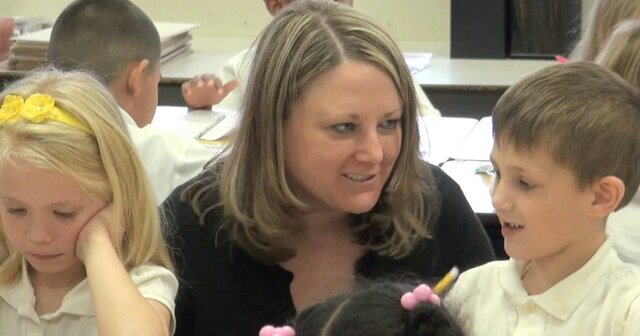
Bridge Magazine has just announced that it will be releasing its report card grades for Michigan schools next week. Bridge's report card ranks schools in a way that is nearly identical to how the Mackinac Center ranks schools on its annual school report cards. Both report cards take into consideration a school’s poverty level when comparing their performance to other state schools. This should not be surprising, since Bridge credits the Mackinac Center for its methodology.
Despite a very similar approach, curious readers will notice that some schools received markedly different rankings in the two report cards. For example, Ashley Community Schools, a district Bridge labels an “academic champ,” received an F for its high school and C’s for its middle and elementary schools on Mackinac Center report cards.
In the development of our 2013 report card, we noticed that there was no correlation between the percentage of students eligible for reduced-price lunch and a school's test scores. Bridge Magazine uses the percentage of students eligible for both free and reduced-price lunch to control for poverty; however, since 2013, the Mackinac Center has only used the percentage of students eligible for free lunch. We believe this provides a more accurate control for student poverty.
This small difference in methodology likely explains the large difference in grades for Ashley Community Schools. Many Ashley students are eligible for reduced-price lunch. The Mackinac Center does not count those students in its poverty tally — but Bridge does. For example, close to 25 percent of students at Ashley High School were eligible for free lunch in the 2012-13 school year, and another 70 percent were eligible for reduced-price lunch.
For 2012-13, the Mackinac Center report card adjusted for 25 percent of Ashely High School students coming from poverty. In comparison, Bridge would likely have adjusted for 95 percent coming from poverty. Those adjustments can make a big difference in a school's grade.
In 2012-13, for example, Ashley High School students posted an average composite ACT score of 18.5, below the statewide average of 19.7. Approximately 25 percent of Ashley High School students were eligible for free lunch that year, a lower disadvantaged population than the statewide average of 43 percent. As a result, Ashley High School received a low report card grade from the Mackinac Center for 2012-13.
In comparison, Star International Academy, the Mackinac Center's top-ranked high school, posted an average composite ACT score of 19.9 that year, a score slightly above the state average. Close to 82 percent of Star International students are eligible for free lunch, almost twice as many as the statewide average. As a result, Star International received one of the highest report card grades from the Mackinac Center for 2012-13. However, Star International's free and reduced-price lunch percentage is 87 percent — lower than Ashley High School.
This difference likely explains why Bridge gave Ashley Community Schools a higher grade than Star International Academy.
Despite the differences in report cards, both Bridge's and the Mackinac Center's work highlight one important thing: The state needs to change the way it ranks schools. Michigan's "Top-to-Bottom" school ranking does not adjust for student background. Indeed, the Mackinac Center has shown that the TTB list is largely a proxy for student poverty.
The fact that two independent organizations are now generating annual school report cards, both of which, despite their differences, provide parents with a better understanding of real school performance, shows that there is a great deal of interest in improving the way the state assesses its public schools.
Permission to reprint this blog post in whole or in part is hereby granted, provided that the author (or authors) and the Mackinac Center for Public Policy are properly cited.
Get insightful commentary and the most reliable research on Michigan issues sent straight to your inbox.

The Mackinac Center for Public Policy is a nonprofit research and educational institute that advances the principles of free markets and limited government. Through our research and education programs, we challenge government overreach and advocate for a free-market approach to public policy that frees people to realize their potential and dreams.
Please consider contributing to our work to advance a freer and more prosperous state.

Donate | About | Blog | Pressroom | Publications | Careers | Site Map | Email Signup | Contact